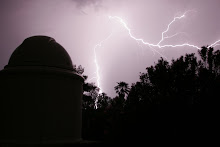AAPOD is hosted at the Astronomy.FM website, which is an outstanding source of astronomy information. One of the unique features of this site is their "AFM Radio", which broadcasts various astronomy-themed audio programs over the internet. It's free and there are a lot of topics covered.
I took this image back in October, 2009 using an ST-10XME camera. I later targeted this same region with a wider-field camera. Both versions, along with acquisition details, can be viewed on my Xanadu Observatory website by clicking here.
I suppose that published images feed my ego a bit. It takes an awful lot of work to set up the equipment properly, plan an observing run, acquire the data, and process it to obtain a visually pleasing result, so when an image is published it provides affirmation that someone believes I've done a good job - and who doesn't appreciate an occasional pat on the back? There's no paycheck, so it's a labor of love - that's what makes it Amateur.
I learned from my mother, who is a wildlife artist, to appreciate the beauty and glory of nature. When I work on an astroimage, I'm hoping to capture just a bit of that, and sharing it with others makes it even more meaningful. Similarly, I love to view astroimages taken by others. One of my first astronomy books was "New Handbook of the Heavens", a worn-covered discard from the Hilton Central School District's library, but a true treasure trove to me. Published in 1941, the photo on page 198 of the "Andromeda Nebula" from Mt. Wilson awakened the dreamer in me that still exists today. (Of course we now know this object as the Andromeda Galaxy, not Nebula, and instead of the 800,000 light-year distance per the book, it's believed to be about 2.5 million light-years away).
(Note - AAPOD is not to be confused with APOD, the Astronomy Picture Of the Day site that often has landscape and professional telescope images).



